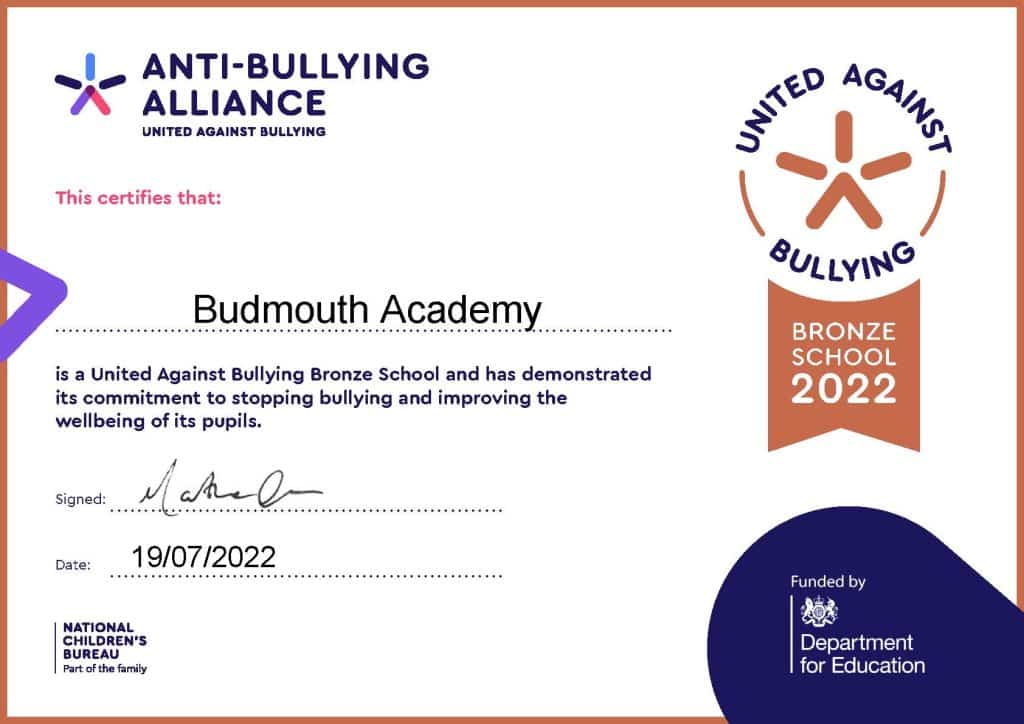Bullying Is defined as the repetitive, intentional harming of one person or group by another person or group, where the relationship involves an imbalance of power. Bullying is, therefore:
- Deliberately hurtful.
- Repeated, often over a period of time.
- Difficult to defend against
Bullying can include:
| Type of bullying | Definition |
| Emotional | Being unfriendly, excluding, tormenting |
| Physical | Hitting, kicking, pushing, taking another’s belongings, any use of violence |
| Racial | Racial taunts, graffiti, gestures |
| Sexual | Explicit sexual remarks, display of sexual material, sexual gestures, unwantedphysical attention, comments about sexual reputation or performance, orinappropriate touching |
| Verbal | Name calling, sarcasm, spreading rumours, teasing |
| Cyber-Bullying | Bullying that takes place online, such as through social networking sites,messaging apps or gaming sites |
Through our Personal Development Curriculum, assemblies, and our core values of Respect, Excellence and Determination, we educate students about the harm caused by bullying and the importance of standing against it. Our academy operates a zero-tolerance approach to bullying, ensuring every student knows the actions they can take to prevent it and the support available to overcome its impact.
We publicise these actions across the academy and at regular opportunities and give guidance to students on who they can approach for support should they be bullied. This also includes WHISPER our anonymous reporting system.
The following steps may be taken when dealing with incidents of bullying:
If during a lesson a teacher may apply normal sanctions and follow up after the lesson as set out below.
- If bullying is suspected or reported, the incident will be dealt with immediately by the member of staff who has been approached. This member of staff will report the incident to the appropriate Pastoral Leader
Head of School, Pastoral Support Leader
- The Pastoral Leader will interview the alleged victim and record all on a witness statement. The extent of the bullying will be ascertained and the name of the alleged perpetrator(s) identified. This should be recorded in SIMS as a linked document to the student’s file. The Pastoral Leader will arrange for any required support for the student (e.g. Academy Counsellor, outside agency support). An entry will be made into the school’s electronic bullying log.
- The Pastoral Leader will interview the perpetrator(s). This student will be required to reflect on their behaviour and its consequences, give a reason for them and identify steps they will take to prevent a repetition. They will be issued an Academy sanction for the harm they have caused.
- The Pastoral Leader will communicate with the parents of both the victim and perpetrator to inform them of action the academy has taken.
Our Anti-Bullying Charter
For students who experience bullying behaviour:
|
For students who engage in bullying behaviour:
|
For the school community:
|
Anti-Bullying Structure



